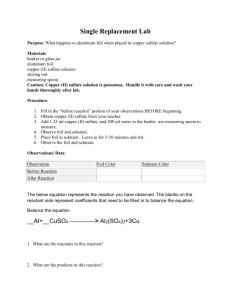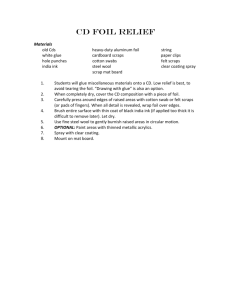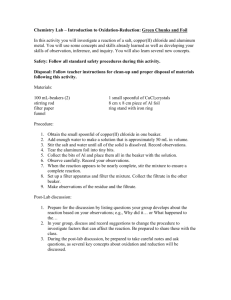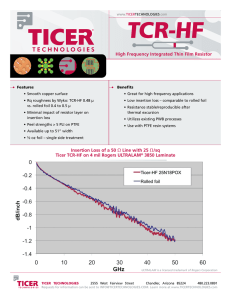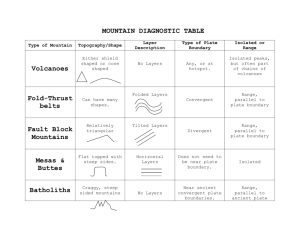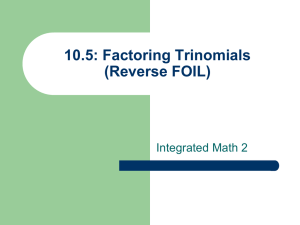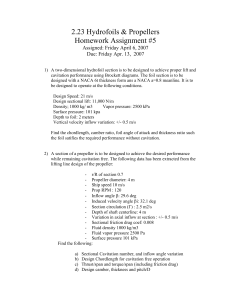氣流模擬分析 HW#1 (9/25/01)
advertisement
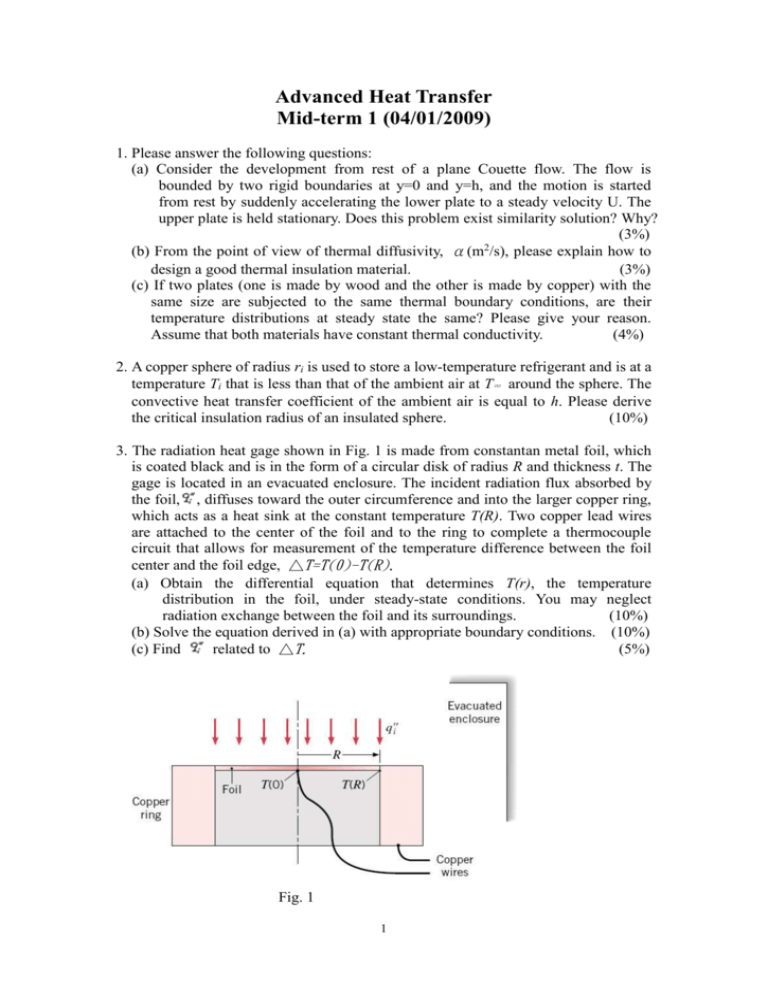
Advanced Heat Transfer Mid-term 1 (04/01/2009) 1. Please answer the following questions: (a) Consider the development from rest of a plane Couette flow. The flow is bounded by two rigid boundaries at y=0 and y=h, and the motion is started from rest by suddenly accelerating the lower plate to a steady velocity U. The upper plate is held stationary. Does this problem exist similarity solution? Why? (3%) 2 (b) From the point of view of thermal diffusivity, α(m /s), please explain how to design a good thermal insulation material. (3%) (c) If two plates (one is made by wood and the other is made by copper) with the same size are subjected to the same thermal boundary conditions, are their temperature distributions at steady state the same? Please give your reason. Assume that both materials have constant thermal conductivity. (4%) 2. A copper sphere of radius ri is used to store a low-temperature refrigerant and is at a temperature Ti that is less than that of the ambient air at T∞ around the sphere. The convective heat transfer coefficient of the ambient air is equal to h. Please derive the critical insulation radius of an insulated sphere. (10%) 3. The radiation heat gage shown in Fig. 1 is made from constantan metal foil, which is coated black and is in the form of a circular disk of radius R and thickness t. The gage is located in an evacuated enclosure. The incident radiation flux absorbed by the foil, , diffuses toward the outer circumference and into the larger copper ring, which acts as a heat sink at the constant temperature T(R). Two copper lead wires are attached to the center of the foil and to the ring to complete a thermocouple circuit that allows for measurement of the temperature difference between the foil center and the foil edge, △T=T(0)-T(R). (a) Obtain the differential equation that determines T(r), the temperature distribution in the foil, under steady-state conditions. You may neglect radiation exchange between the foil and its surroundings. (10%) (b) Solve the equation derived in (a) with appropriate boundary conditions. (10%) (c) Find related to △T. (5%) Fig. 1 1 4. An aluminum plate with thickness, L, is mounted in a horizontal position, and its bottom surface is well insulated. A special, thin coating is applied to the top surface such that it absorbs α (0%<α<100%) of any incident solar radiation, while having an emissivity of ε. The density ρ and specific heat c of aluminum are known. (a) Consider conditions for which the plate is at a temperature of Tp and its top surface is suddenly exposed to ambient air at T∞ and to solar radiation that provides an incident flux . The convection heat transfer coefficient between the surface and the air is h. What is the initial rate of the change of the plate temperature? (12%) (b) What will be the equilibrium temperature of the plate when steady-state conditions are reached? Write down the steady-state equation. Do not try to solve it. (3%) 5. A semi-infinite solid is subjected to a periodic heating at its surface. The differential equation is given by 2T 1 T x 2 t The boundary condition at x=0 is that T(0,t)= Ti + T0 sinωt while, as x becomes infinite, T approaches Ti. Ti and T0 are constant. (a) Does this problem exist a similarity solution? Explain why? (5%) (b) Please determine the temperature profile. (15%) 6. When two semi-infinite solids, shown in Fig. 2, initially at uniform temperatures TA,i and TB,i, are placed in contact at their free surfaces. If the contact resistance is negligible, the requirement of thermal equilibrium dictates that, at the instant of contact (t=0), both surfaces must assume the same temperature Ts, for which TB,i <Ts< TA,i. Ts does not change with increasing time. (a) Write down the boundary conditions at the contact surface of both solids. (5%) (b) Find the temperature of the contact surface, Ts. (15%) Fig. 2 2


